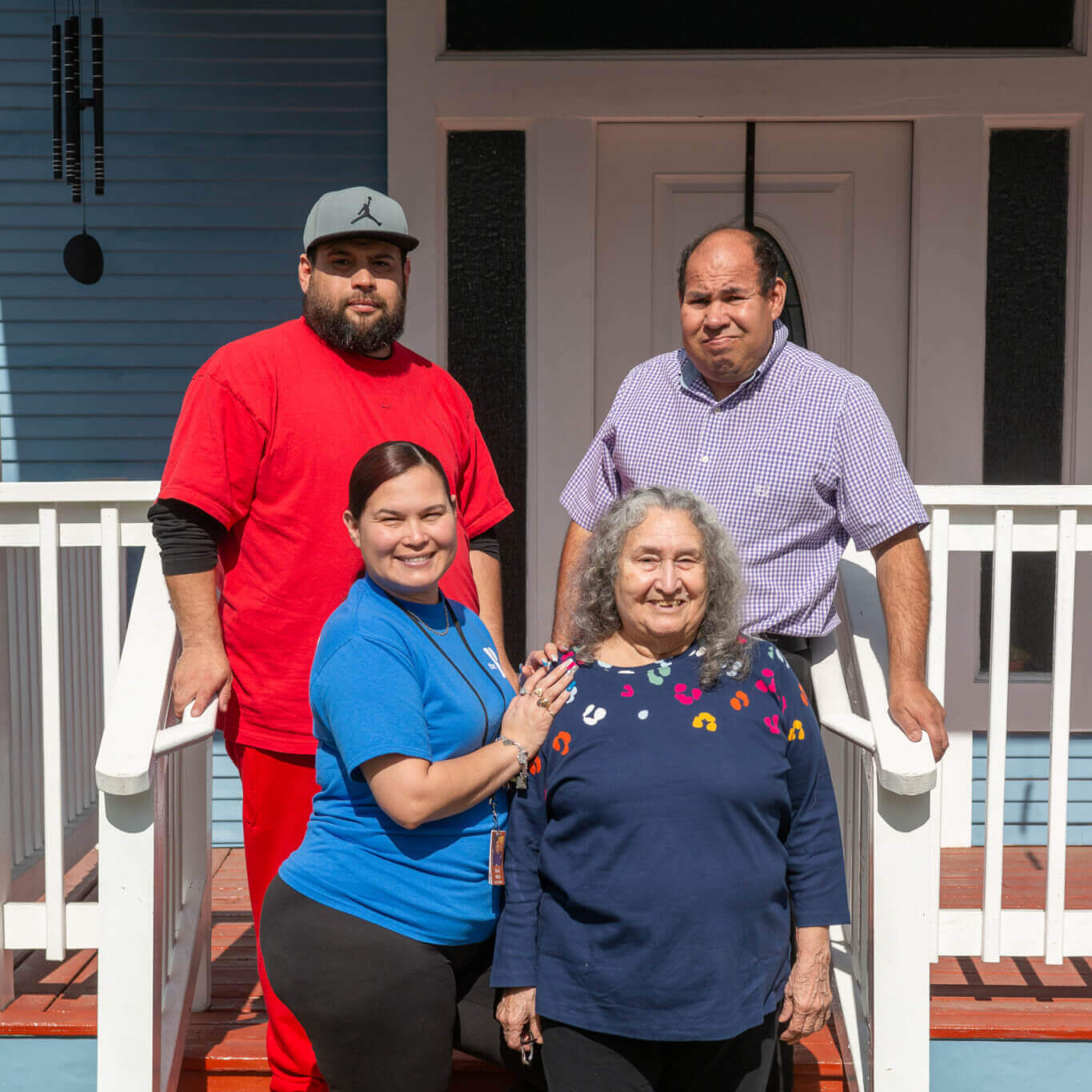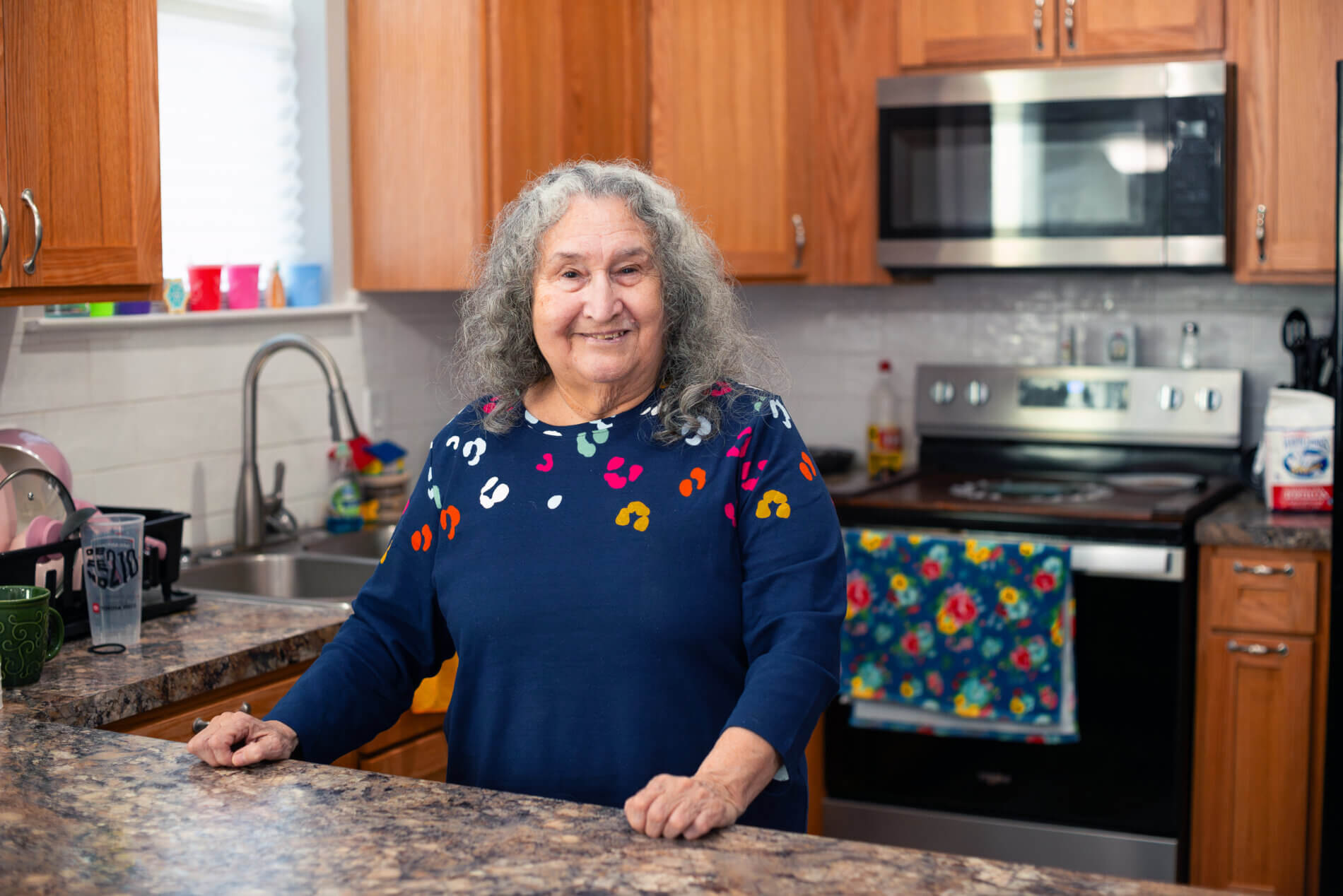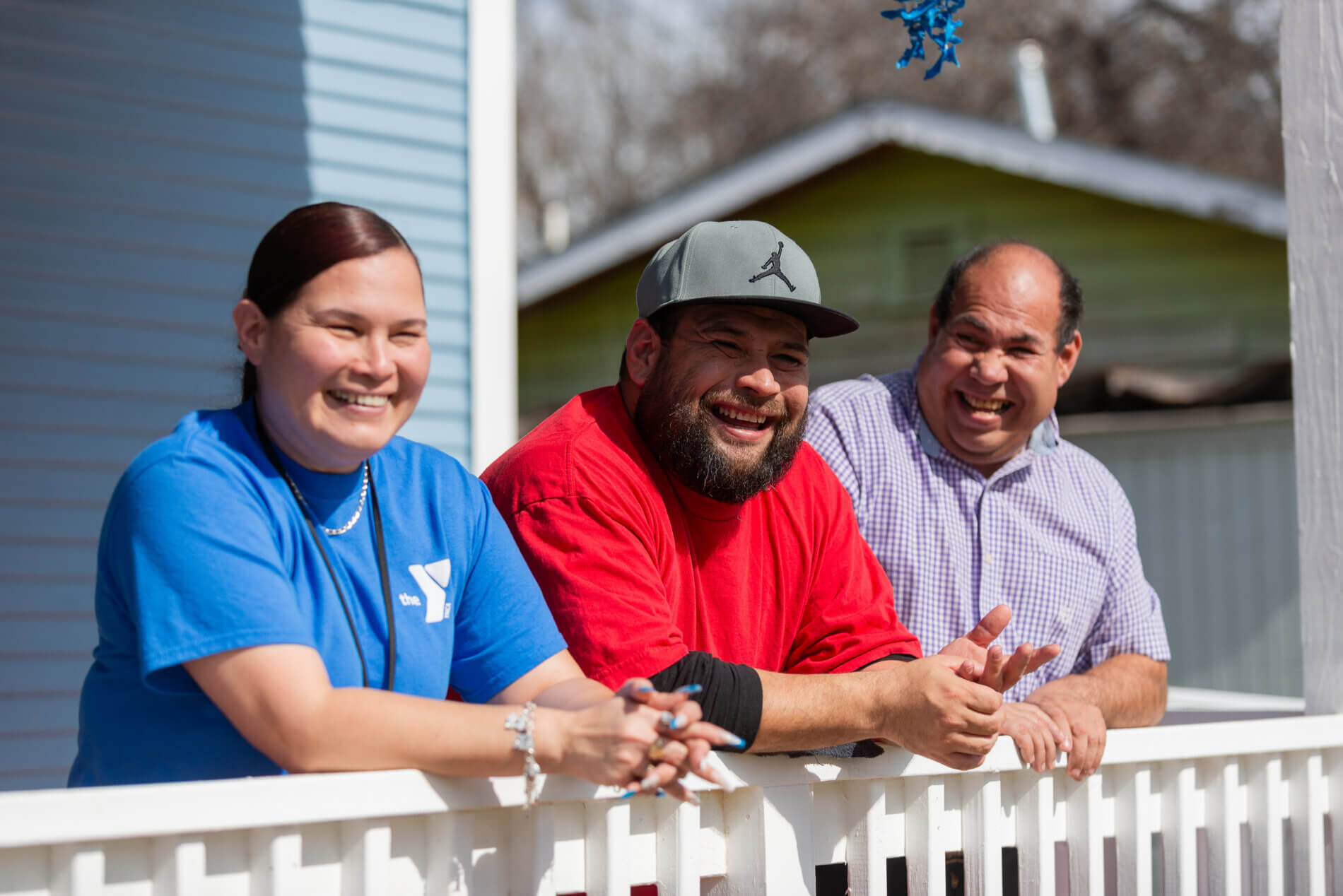
In the late afternoon of Olga Escobedo’s 76th birthday last fall, she walked into the front door of her home to find something she’d not seen in over 20 years: the place was full of people.
She saw six of her seven adult children, brothers, sisters, cousins, and more grandchildren than she could count. Wall to wall—from the entryway to the living room to the kitchen in the back of the house—jammed with bodies raising their arms and cheering SURPRISE!
“Everyone was here!” she recalls with a laugh.
The cheers, and the sense of surprise, were about much more than Escobedo’s birthday. The family was celebrating something that none of them thought would be possible: Olga Escobedo has a home.

| Rebuilding to Build Wealth |
|---|
Escobedo’s parents bought their one-story home on San Antonio’s Westside in the early 1960s. There, they finished raising Escobedo and her siblings.
By 2000, both of Escobedo’s parents were gone, and her siblings had left the area. Olga remained. Her siblings had signed over the house to her, so she owned it outright. But the home was far more than she could keep up with, given its age and condition and given her limited income as a housekeeper at a Red Roof Inn.
Leaks opened in the home’s roof. Rodents welcomed themselves inside. The low ceilings sagged. The power flickered on and off. Modern conveniences most Americans consider basic—central air and heat, laundry machines—were things Escobedo could hardly imagine. The front porch was treacherous, and the entire home pitched slightly to the east.
► WATCH: We explain the city’s housing issues more in “Making San Antonio.” |
Escobedo’s home was a dangerous place to live. Officials from the City of San Antonio dropped off notices demanding repair. Later, they dropped off notices to vacate.
As a last resort, the city can order a residence be demolished, and Escobedo’s home was on the cusp of receiving that order.
Just under a quarter of San Antonio’s housing stock was built before 1960. Most of those homes have older, income-constrained residents who live within the city’s urban core. If you’ve been tracking our Know Your Neighbor project, you know those neighborhoods have their roots in the era of legal segregation in San Antonio.
Since that era, the neighborhoods have by and large remained disregarded—services withheld, infrastructure neglected.
To this day, many families in such neighborhoods struggle to meet basic needs, much less thrive.
Five hundred homes are demolished every year in San Antonio, and a 2021 report from the University of Texas-Austin showed that San Antonio was ordering more demolitions than any other city in Texas.
In 2022, San Antonio’s city council decided to pilot a different approach. They launched OPERATION Rebuild, focused on situation’s like Escobedo’s where demolition is imminent and where the homeowner has no chance of ever repairing their home. The plan is to enter into agreements with homeowners that allow them to remain in their homes after a rehabilitation project. All they ask is that the homeowner stays in the home and/or keeps it in the family for at least 10 years.
The city is starting small and focused: $1 million per year for five years, with the intent of saving six homes per year. The hope is that if this proves effective, it could be an ongoing intervention.
“We want to collect the data,” says Mark Carmona, Chief Housing Officer for the City of San Antonio and one of the architects of the program. “Is this cost effective? Do we see benefit savings?”
The city is betting that by keeping homeowners in their properties and ensuring they have wealth they can pass on, rehabilitation—in addition to being the right thing to do—will prove to be a better return on taxpayer dollars than expensive demolitions and social supports.
Olga Escobedo stands at her house with San Antonio Mayor Ron Nirenburg on her 76th birthday.
Photo by Elizabeth Cruz.
Escobedo’s home was one of ten initial homes targeted for the project in 2022. Today, she’s living within the same bones of the home she grew up in, but everything about it has changed: the bright blue house boasts two spacious bedrooms, two crisp bathrooms, new kitchen appliances and cupboards, air conditioning, and even a washer-dryer unit. The sturdy, tidy front porch features a ceiling fan spinning gently, chimes swaying musically, and a Welcome sign next to Escobedo’s bright white front door.
On the night of that party, Olga turned to her sister at one point and said, “Look what they did with Mom’s house!”
Her sister replied, “It’s not Mom’s house. It’s your house now.”

| Renovating homes and lives |
|---|
Ask Escobedo how all this happened, and she points to the woman she calls “My angel”: a social worker named Elizabeth Cruz who is the face of the project for all homeowners involved.
That may be OPERATION Rebuild’s true special sauce—it is a two-pronged program, with one part focused on the home, and one part focused on the homeowner. Cruz’s job is to get to know that person and their family.
“She’s been the heartbeat of [the effort],” Carmona says.
Cruz says her job is to listen to people’s stories. “The families didn’t just wake up one day and say, ‘I’m going to let my house fall apart on me,’” says Cruz. “Something happens. We don’t know what people are going through.”
Cruz spent hours with Escobedo and her family members. Her children “were involved in the process from the beginning,” Cruz says, and when it came to things like contracts that needed signing, she walked them through it all line by line.
She sees deep family engagement as part of the long-term investment of the program. “I engage the entire family,” she says, “because that’s the system that’s going to benefit from the generational wealth that is coming to the homeowner.”
“I engage the entire family because that’s the system that’s going to benefit from the generational wealth that is coming to the homeowner.”
As for Escobedo, she means it when she calls Cruz her “angel.”
“I would always pray to God for me to have a house,” she says. “He sent her to me.”
A few weeks ago, I called Cruz to fact-check a couple pieces of the story. When she picked up the phone, she was sitting right next to Olga Escobedo, having another in a series of lunches. While the home renovation finished months ago, Cruz and Escobedo are still talking.
Cruz says it’s becoming more and more clear to her how renovating someone’s home can change the life trajectory of a homeowner and their family.
“I see a whole different Olga,” she says.
Cruz says it’s becoming more and more clear to her how renovating someone’s home can change the life trajectory of a homeowner and their family.
Compass Rose Journey is helping its students and teachers to get off the couch and into the outdoors.
Laity Lodge Family Camp's retreat with Austin Voices for Education and Youth allowed families to embrace both the familiar and different.